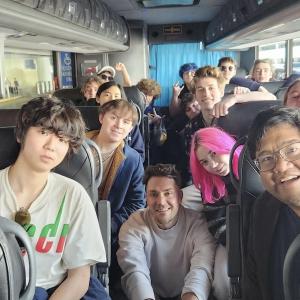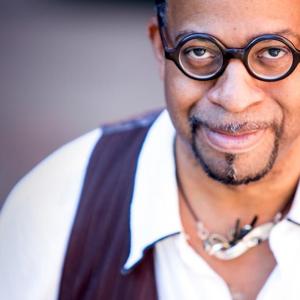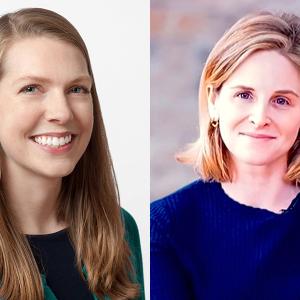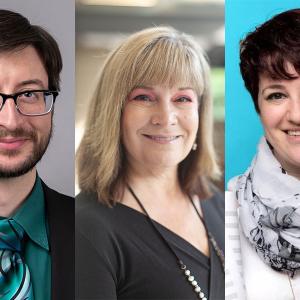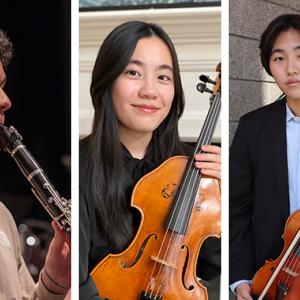Applications are still open for Arts Camp and Arts Academy. Programs fill quickly—submit your app today!
How Academy alumna Holly Gilbert went from cello to NASA
Gilbert, who worked on the 2018 Solar Orbiter launch, gives much credit to Interlochen's science classes for fueling her passion for physics.
Each year, Interlochen Arts Academy welcomes a fresh group of students who are excited to experience high-quality artistic training combined with comprehensive, college-prep academics. Some of those students become artists—writers, musicians, actors, filmmakers, visual artists and more.
And sometimes, a young artist can find a whole new and unexpected passion at Interlochen. In this group, you’ll find Holly Gilbert.
Gilbert (IAA 86-88) is Deputy Director of the Heliophysics Science Division at NASA’s Goddard Space Flight Center in Greenbelt, Md. She visited Interlochen last fall to speak to physics students and give the keynote address at the annual meeting of the Michigan Section of the American Association of Physics Teachers, which was hosted by Interlochen in the Dow Rotunda.
“I was telling the students, the actual classroom where (Instructor of Mathematics and Physics Taoufik) Nadji is teaching is where I fell in love with physics,” Gilbert said. “Even though I was a cello major, I was just fascinated to be studying optics and electromagnetic waves—that is kind of where it started.”
Gilbert first came to Interlochen in 1986—her junior year—to study cello, which she had begun playing in fourth grade.
"I wasn't one of the best cellists here, but wow—what a great opportunity to be able to come and be embedded in this environment and really get the intensive learning of the cello," she said.
She was invested in cello as a career, though science quickly exerted its influence on her at the Academy. But she says the general excellence, focus and quality of education to be found at Interlochen is something she continues to appreciate.
“I really was academically driven—I've always been very interested in math and science,” she said. “So when I got here and found out that the academics were taken as seriously as the art, that was a perfect combination. It probably academically was the best school I attended.
“I really learned how to dedicate myself to something (at Interlochen).”
The skills she gained here had long-term impact on her future—particularly the confidence that comes with performing in front of an audience, over and over.
“I speak in public a lot,” Gilbert said. “As a scientist generally you have to give talks about your research—you're speaking in front of people pretty often, and a lot of scientists have a very hard time with that. I think from my performance experience here as a cellist, I was able to pretty easily switch into giving public talks and handling that kind of stress. I think that's a pretty neat tie between (art and science)—knowing how to handle that pressure.”
Gilbert’s path to her current role at NASA was a bit circuitous. After she received her Ph.D., she got a job at the High Altitude Observatory in Boulder, Colo., then was recruited as a research scientist at Rice University in Houston, where she’d expected to remain, following a tenure track. But it wasn’t to be, because she was next recruited by NASA—where she says her performance experience paid off once again.
“What they originally recruited me for had a lot to do with education and outreach for the heliophysics division, because I had done some media work,” she said. “Had I not actually had that skill (of performing in public), I'm not sure I would have ended up at NASA, to be honest.”
One of her favorite memories from her time at Interlochen Arts Academy—besides the challenging educational opportunities—also made a surprise appearance in her profession as a scientist.
“I remember we had a guest conductor here, Benjamin Zander, and he made such an impression on me. He really had a way of bringing out the passion in the kids,” Gilbert said.
“We have this series at Goddard where we bring in guest speakers, and a couple of years ago I looked the schedule, and there was Ben Zander. So I went to the talk and spoke with him, told him I was at Interlochen when he came as a guest conductor, and he named off the pieces we did and everything!”
So what’s up next for the arts student-turned-scientist who’s now helping run a division of NASA?
“I'm part of this mission in development called Solar Orbiter that's going to be launched in 2018. This is a pretty cool mission that's going to go fairly close to the sun, within Mercury's orbit—and then it's going to be orbiting the poles of the sun,” Gilbert said. “For the first time we'll be able to get observations at the poles ... this is going to allow us to get really good measurements of the sun. It's really exciting to be involved in a project that NASA is developing.”
But even with her focus on science and her eyes turned toward the sun, Gilbert has never forgotten what she came to Interlochen for in the first place.
“I just started in January (2015) again, after 30 years! I kept my cello, which I'm so glad I did—and I kept thinking someday I'd pick it up again. So just recently I started taking lessons and had to remember how to read music … and I love it. It's been great,” she said, smiling at the memories. “It's a shame I didn't pick up for so long, but better late than never.
“Even after a few months it's still tricky, but it's amazing how the muscle memory is kind of still there after all this time.”
